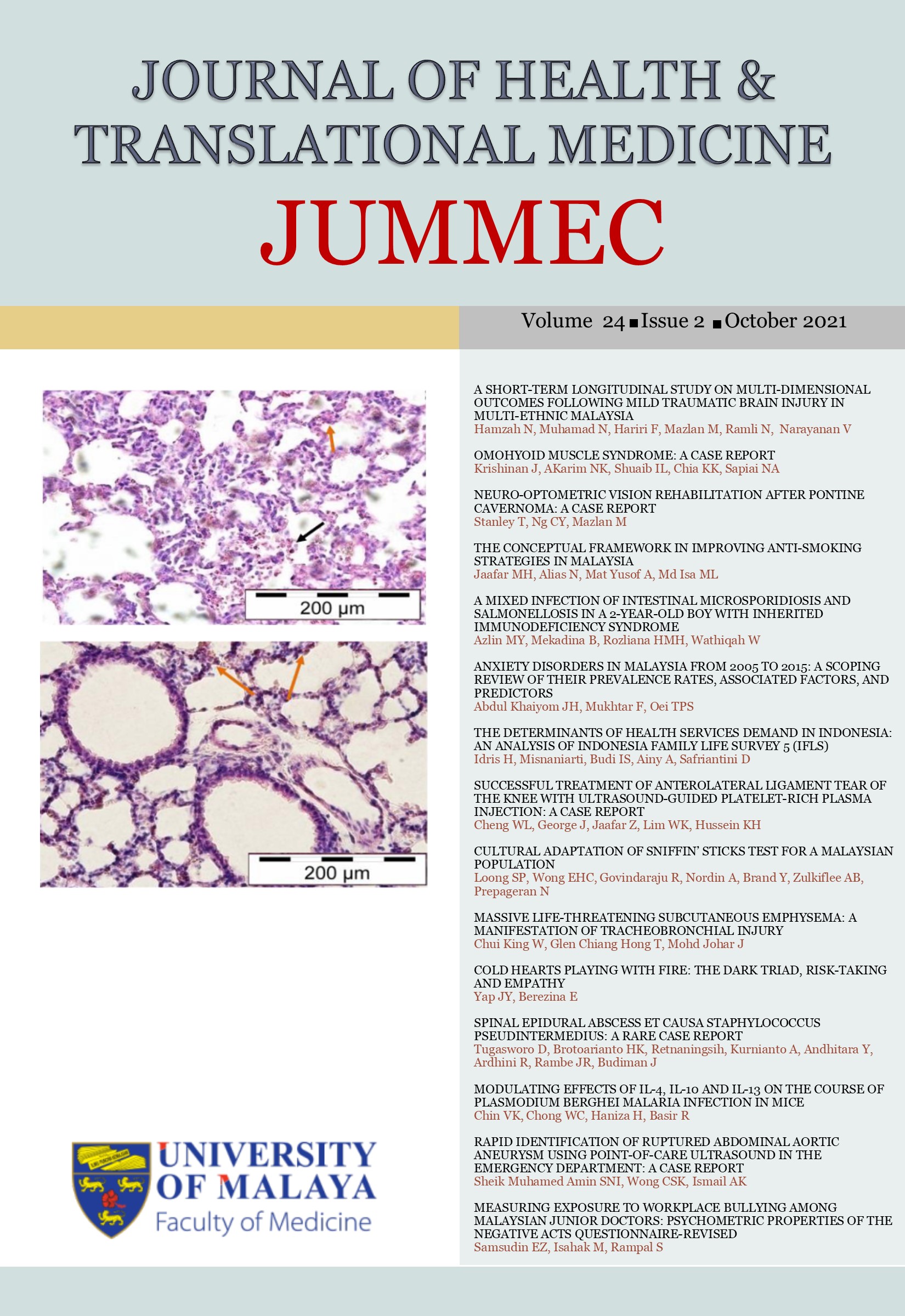NEURO-OPTOMETRIC VISION REHABILITATION AFTER PONTINE CAVERNOMA: A CASE REPORT
Received 2020-04-29; Accepted 2020-12-04; Published 2021-09-10
DOI:
https://doi.org/10.22452/jummec.vol24no2.3Keywords:
Brain Injury, Neuro Optometric Vision Rehabilitation, Vision Problem, Vision processingAbstract
It is common to have vision problems after neurological insults such as traumatic brain injury, stroke or brain tumours. While these neurological insults can affect patients’ daily functioning to different extents, vision problems can be the main obstacle to the dysfunction. A 19-year-old boy with pontine cavernoma presented to the clinic with multiple visual problems at ten months after surgical removal of the tumour. He has left 6th cranial nerve palsy with persistent diplopia and nystagmus. These were associated with giddiness, imbalance, cerebellar impairments, right hemiparesis and hemisensory loss. This case illustrates the importance of adding the neuro-optometric vision rehabilitation, which include visual information processing therapy and other substitutive interventions, into the existing multidisciplinary rehabilitation program to achieve the greatest functional benefit.
Downloads
Downloads
Published
Issue
Section
License
All authors agree that the article, if editorially accepted for publication, shall be licensed under the Creative Commons Attribution License 4.0 to allow others to freely access, copy and use research provided the author is correctly attributed, unless otherwise stated. All articles are available online without charge or other barriers to access. However, anyone wishing to reproduce large quantities of an article (250+) should inform the publisher. Any opinion expressed in the articles are those of the authors and do not reflect that of the University of Malaya, 50603 Kuala Lumpur, Malaysia.


